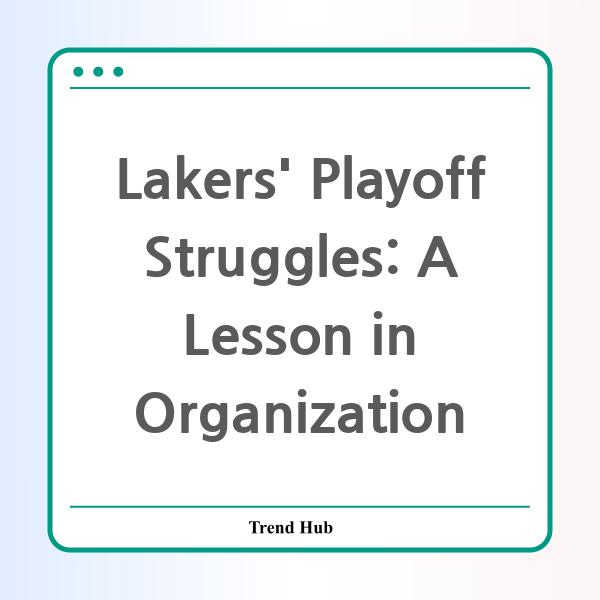* This website participates in the Amazon Affiliate Program and earns from qualifying purchases.

As the 2025 NBA playoffs unfold, the Los Angeles Lakers find themselves under intense scrutiny following a disappointing Game 1 loss to the Minnesota Timberwolves. After head coach JJ Redick described the Lakers' performance as one marred by organizational issues and a lack of physical readiness, the pressure is on for the team to rebound in Game 2. But what exactly went wrong, and how can the Lakers address these issues moving forward?
In the lead-up to Game 1, the Lakers appeared to be in a good position, securing the No. 3 seed in the Western Conference thanks to a series of crucial wins down the stretch. However, their first postseason game proved that securing a playoff spot doesn’t always guarantee success on the hardwood. The Timberwolves, on the other hand, were in their element, shooting 50% from beyond the arc and setting a franchise record with 21 made three-pointers during the game. The Lakers, in contrast, struggled to find their rhythm.
Redick highlighted a troubling trend: organizational issues that left players disoriented and unprepared. During the game, the Lakers often found themselves bunched together, leaving vast spaces on the court unoccupied. This lack of positioning was evident in their early offense, where players frequently congregated at the half-court mark rather than spreading out effectively. Such disorganization allowed the Timberwolves to capitalize on open shots, a reality that became painfully clear as the game wore on.
Austin Reaves, one of the standout players, openly critiqued his own performance, citing a lack of confidence and energy. "I wasn’t myself," he admitted after reviewing film of the game. These sentiments echoed throughout the roster as players struggled to find their footing. LeBron James, known for his prowess on the court, was held scoreless until the latter stages of the second quarter, raising alarms about the team's lack of offensive cohesion.
Defensively, the Lakers fell victim to the Timberwolves’ corner three-pointer strategy. Minnesota converted nine corner threes, taking advantage of the Lakers’ defensive lapses to create open looks. The defensive rotations were sluggish, leading to a whopping 21-for-42 shooting from beyond the arc. The Timberwolves were able to exploit these gaps, and the Lakers appeared unable to adapt effectively during the game.
In the lead-up to Game 2, Redick emphasized the importance of practice and preparation. He claimed that the Lakers had their best practice in months on Monday, focusing on organization and offensive execution. Players engaged in live scrimmages, aiming to rectify the mistakes from their previous outing. The hope is that this increased intensity in practice will translate into a more organized and effective game plan on the court.
As the Lakers approach Game 2, the question remains: Can they translate practice improvements into playoff success? There’s no doubt that they are facing pressure to perform, especially with the prospect of falling behind 2-0 in the best-of-seven series. With key players like Luka Dončić and Reaves needing to step up, the Lakers cannot afford to let their organizational issues linger.
Ultimately, Game 2 will serve as a pivotal moment for the Lakers. A victory could reinvigorate the team and reshape the narrative surrounding their postseason aspirations. However, failure to adapt and improve might not only lead to a second consecutive first-round exit but also raise questions about the team’s structure and readiness going into future challenges.
With lessons learned from a tough Game 1, the Lakers must embrace a renewed focus on organization and physicality if they are to make a deep playoff run in 2025. Fans and basketball analysts alike are watching closely to see if they can rise to the occasion and reclaim their reputation as a formidable playoff contender.
* This website participates in the Amazon Affiliate Program and earns from qualifying purchases.